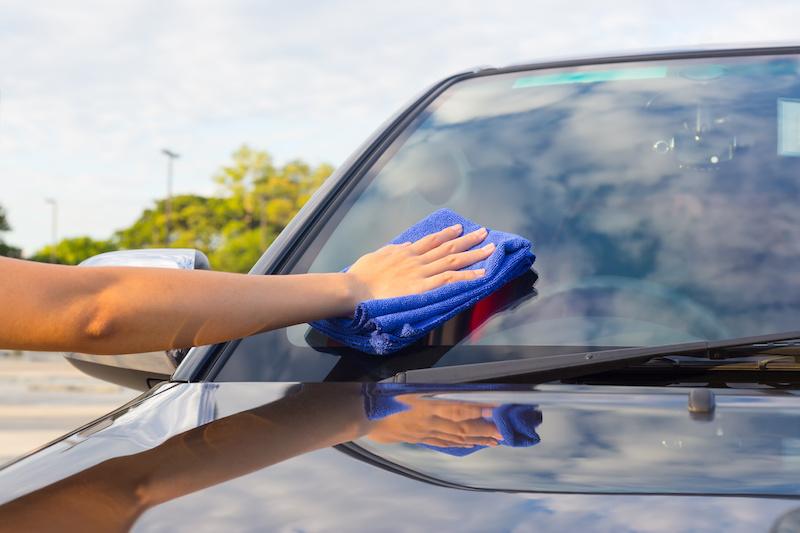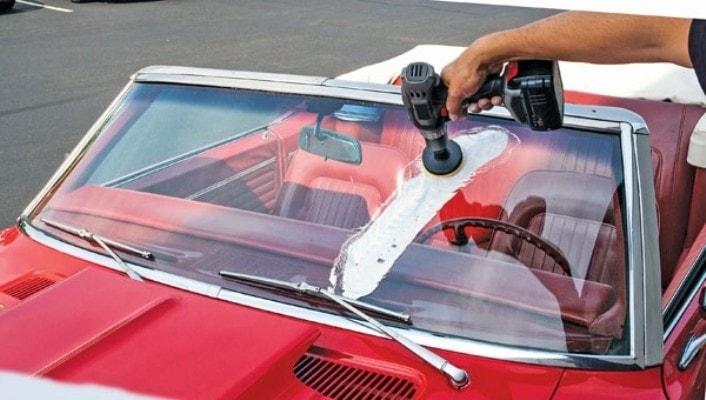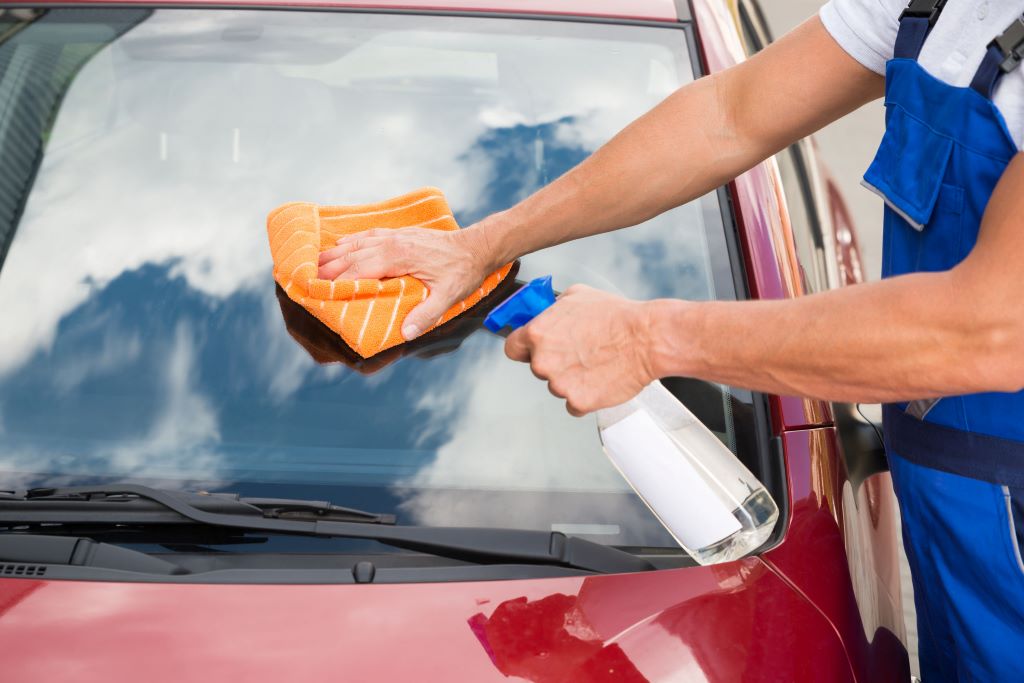What could be the most unsightly thing and potentially dangerous too in a beautiful car? Well, nothing could beat scratches on the windshield or windows! A graze on the body paint comes closer, but it in no way causes an accident. How to remove scratches from windshield? Can you even fix this problem or have to change the glass?
Contents
What Can Cause Scratches from Windshield
There are several daily items that might harm a car’s windshield.
Wiper blades that aren’t working
The surface of the wiper blades on the windshield can harden with age and neglect, producing scratches, especially when the glass is dry. The same thing can happen if a little item, such as a pebble, becomes stuck between the blades.
Inadequate cleaning
Scratches might occur on your windshield if you wipe it with a rough/dirty cloth. The easiest technique to clean safely and properly is to use a soft microfiber or cotton cloth.
Debris on the road
Scratches are also produced by rocks and pebbles flying into your windshield from the road, particularly while driving behind vehicles and lorries, which readily trap rocks on the road.
Ice scrapers that have been damaged
If you live in a cold, snowy climate, you may need to clear ice from your car’s windshield and glass on occasion. Ice scrapers are designed to protect the windshield, but if they become worn or broken, they can harm it.
How To Remove Scratches From Windshield?
A scuff or cut on the windshield obstructs the sight of vision at the time of driving. Also, even a hairline crack can turn into a full-blown laceration over time. Once that happens, you have no other way except for replacing the windscreen, which is expensive.
What to do? You can just fix the chip or crack so it does not get bigger. Remember that it’s not possible to repair a deep graze, anything deeper than 50 microns.
How do you know that it’s technically fixable? If the crack catches your fingernail, it’s too deep to be repaired at home. If that’s not the case, follow these methods:
For Light Scratches
Using an acrylic scratch remover to fill in a light scuff or crack is the easiest answer to your problem of how to remove scratches from windshield.
You have to apply this liquid to the affected areas and rub with a wet microfiber cloth or a super fine sandpaper (600-grit or more). It will look transparent when dry hard and conceal the damage with a protective layer.

But, this chemical is not available at many local stores. In that case, you can use a glass scrub product (such as Glass Science Glass Scrub).
It is mainly used for erasing persistent stains and grime. However, it also works just fine for fixing light cracks on the windscreen.
Wrap your hand in a damp microfiber towel, pour some liquid on it, and rub the damaged area. Work on a small section (if the crack is a big one) at a time and maintain even pressure throughout.
It’s an abrasive ingredient that will cut through the surface in case of direct application.
SEE MORE:
For Deep Scratches
Cerium oxide is a great solution for fixing deep scratches. These are still less than 50 microns but deeper than just a light graze on the surface.
The chemical ingredient is mainly used in ceramics and jewelry industries for its low-abrasive nature. It’s good for polishing metal, ceramic, and glass items.

Add water to the powdered cerium oxide to make a paste with semi-liquid consistency. Apply it to the scratched area. A hand drill with an attached hard rubber polishing wheel will come handy in this case.
Use it to polish the area where cerium oxide is used. The whole process needs patience and consistent application of the paste and polishing.
Be careful about the consistency of the mixture and the amount of the pressure applied by the drill. The reward will be a clean, scratch-free windscreen that provides a clear vision while driving.
How To Prevent Scratches From Windshield
Regular Cleaning and Maintenance
- Clean it regularly using a soft microfiber cloth and a gentle glass cleaner.
- Remove stubborn dirt and bugs with a mixture of water and mild soap.
- Avoid aggressive scrubbing, which can cause scratches.
Proper Wiper Blade Care
- Replace them every 6-12 months.
- Keep the windshield and wiper blades clean.
- Avoid using your wipers on a dry or icy windshield.
Parking Considerations
- Park in a garage or shaded area to minimize exposure to the elements.
- Avoid parking under trees where falling branches or sap can cause damage.
Using Protective Windshield Films
- Clear adhesive films can provide an extra layer of protection against debris.
- These films are nearly invisible and can be easily replaced if damaged.
Avoiding Abrasive Cleaning Materials
- Use only microfiber cloths and gentle cleaners.
- Avoid using abrasive sponges or towels that can scratch the glass

Choosing the Right Windshield Repair Kit
In case your windshield does get scratched, it’s essential to have the right repair kit:
- Choose a high-quality windshield repair kit that matches the type and severity of the damage.
- Follow the instructions carefully to achieve the best results.
Professional Windshield Maintenance
- Regularly schedule windshield inspections with a professional.
- Address minor issues before they worsen and require costly replacements.
Signs It’s Time for Windshield Replacement
Certain signs indicate a windshield replacement is necessary:
- Deep and extensive scratches that obstruct your vision.
- Multiple cracks and chips across the glass.
- Compromised structural integrity, posing a safety risk.
FAQs on How To Remove Scratches From Windshield
-
Is toothpaste effective in removing scratches from a windshield?
To remove scratches from your windshield, do not use toothpaste. It is intended for teeth, not glass, and can aggravate scratches.
-
How much does a scratched windshield repair cost?
The cost of fixing a damaged windshield varies based on the automobile type, year of manufacture, and degree of the damage. Please contact your local AIS Windshield Experts servicing center for a precise price.
-
Is WD 40 effective in removing scratches from glass?
You should never use WD 40 to remove scratches from glass. WD 40 is not a polish; it is a petroleum-based lubricant.
-
Are DIY windshield repair kits effective?
DIY kits can be effective for minor scratches, but for significant damage, it’s best to seek professional help.
-
How often should I replace my wiper blades?
Wiper blades should be replaced every 6-12 months or as soon as you notice streaks or poor visibility.
Check this video from John Engel to learn more about an easy DIY project to remove scratch on your glass!
You now know how to remove scratches from windshield and learn some notices on ways to prevent them.
In general, maintaining a scratch-free windshield is essential for your safety and driving experience. By following these preventive measures and promptly addressing any issues, you can enjoy clear and unobstructed views of the road ahead.
Remember, a little care today can go a long way in preserving your windshield’s longevity and functionality.




This article saved me a lot of money 🙂 Thanks for sharing it. I am not sure if this scratch remover can be found in Bulgaria but I will check up .
And remember if the damage is larger, it would be better to replace the windscreen.
Hi my car is brand new and the other day I noticed that there was a large scratch on my front windscreen (drivers side) which is in the shape of an arc. To be precise it runs the full sweep of the wiper end (tip of the blade) and is only very fine but still noticeable in certain light/directions of viewing. Is it possible to polish it out to make it less noticeable? and what would be the method and product to use?
Thanks in advance for any advice!
Hi Jack Says I’ve got exactly the same problem. Brand new Skoda Kodiaq and an arc shaped scratch on driver’s side. I used quixx acrylic scratch remover (made for plastic not glass) but It didn’t work. So probably the only solution is to polish it with cerium oxide. I’ve owned Ford S-Max for a couple of years and no scratch problem at all. There must be some flaw in VW glass…
Isn’t it better to take the car to professional for the deep scratches as there is a big chance people can make mistakes? Or people can do it on their own?